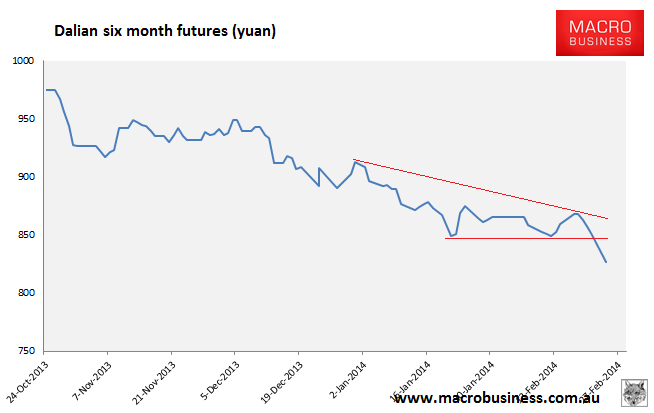A special evening post for those that trade the iron ore majors SDRs or other overnight markets, from Reuters late today:
Chinese steel and iron ore futures on Monday fell to their lowest levels since they were launched following media reports of tighter lending to steel and other property-linked sectors, dimming the outlook for demand.
The official Shanghai Securities News, among other publications, reported on Monday that some banks had started to curb loans to steel, cement and other property-related sectors.
Several banks have issued denials, but the report has sent Chinese equities and most industrial commodities into a
tailspin.The most-traded rebar for May delivery on the Shanghai Futures Exchange hit a session low of 3,308 yuan ($540) a tonne, its weakest since the bourse launched rebar futures in March 2009. It was down nearly 2 percent at 3,327 yuan by 0301 GMT.
Iron ore for delivery in May at the Dalian Commodity Exchange touched a trough of 823 yuan a tonne, its lowest since its October launch, and was last down 2.7 percent at 827 yuan.
“Tighter lending is making markets jittery and will force traders to sell down their inventory to get their cash back,” said Helen Lau, senior analyst at UOB-Kay Hian Securities in Hong Kong.
“Some mills will have to close down because they can’t continue producing as the banks can’t give them the cash they need.”
Here’s Dalian:

Breakdown! More tomorrow morning on what is beginning to look ominous.

